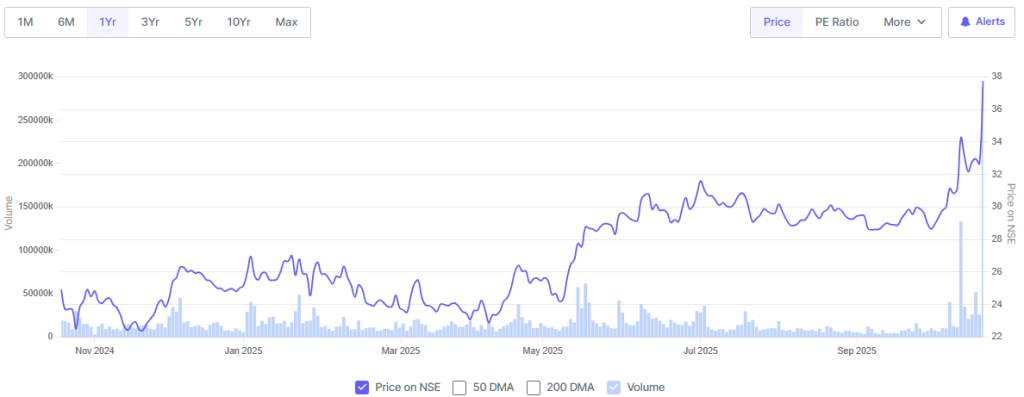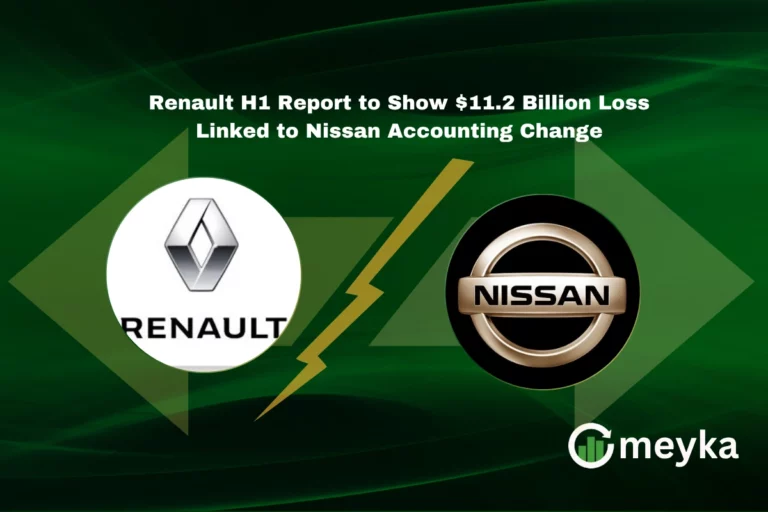South Indian Bank Share Jumps as Small Finance Banks Rally Up to 13%
The South Indian Bank Ltd. (SIB) share has witnessed a notable surge, joining the broader rally among small and mid-sized banks, as investor sentiment turns positive and signs of improving fundamentals emerge. In this article, we explore why the South Indian Bank share has jumped, what underlies the move, and what to watch in the coming weeks in the stock market.
Strong Q2 / Q1 Performance Boosts Confidence
One of the key triggers for the rally in the South Indian Bank share is the bank’s improving financial results. For Q1 FY26, the bank reported a net profit of ₹322 crore, up about 9.5 % year-on-year, even as provisions rose sharply. Its gross non-performing assets (GNPA) ratio improved to 3.15 % as of June 2025, down from 3.20 % as of March 2025. Analysts highlighted that the operating pre‐provision profits rose by 32 % in Q1.
Publishers such as the Economic Times noted that shares of South Indian Bank “rose up to 16.5%” alongside peers after strong Q2-type results in the banking sector.
This strengthening of fundamentals, profit growth, improved asset quality, and rising non-core income gives investors more comfort in the outlook of the bank.

Valuation Metrics Suggest Potential Appeal
From a valuation standpoint, the South Indian Bank share appears attractively priced. According to data from INDmoney, the bank’s price-to-earnings (P/E) ratio stands at 6.29×, and its price-to-book (P/B) ratio is around 0.80×. The 52-week low is around ₹22.27, and the high is around ₹34.44.
Such a combination of low multiples and improving fundamentals is often what triggers interest from value-oriented investors. As the bank appears to trade below peers in terms of valuation, the uptick in the South Indian Bank share can be seen in the context of a broader re-rating in the space.
Banking Sector Tailwinds & Small Finance Bank Rally
The broader banking ecosystem is also supporting the rally. Small and mid‐sized banks have been propelled by expectations of strong credit demand, lower bad‐loan growth, and benign interest-rate conditions in India. In particular, banks such as Federal Bank and DCB Bank also saw significant share-price jumps.
In this climate, the South Indian Bank shares gains from being part of this positive sector narrative. Investors appear to be allocating to banks with improving fundamentals and reasonable valuations, and SIB fits the profile.
Key Strengths for South Indian Bank
Asset Quality Improvement
The drop in gross NPAs and the continued focus on provisioning and non‐interest income are positives for SIB.
Strong Non-Core Income Growth
In Q1, other income surged 47 % year-on-year to ₹622 crore, helping offset pressures elsewhere.
Low Valuation Benchmark
With a P/B of ~0.8× and P/E under 7×, the bank appears relatively undervalued.
Rising Investor Interest
Trading volumes and investor searches on SIB have seen upticks, indicating increased market focus.
Risks & Considerations When Investing
While the move in the South Indian Bank share is encouraging, there remain factors to keep in mind:
- Credit growth risks: As economic conditions evolve, credit demand may slow or borrower stress may rise.
- Interest-rate pressures: If lending yields compress or deposit costs rise, margins could be squeezed, relevant in a banking environment that also includes AI stocks, fintech disruption, and other stock-market drivers.
- Regulatory and macro risk: Banks are subject to regulatory oversight (e.g., by the Reserve Bank of India), and macro headwinds (inflation, borrowing costs) can affect performance.
- Valuation caveats: While the bank looks cheap, low multiples can reflect latent risk. Investors should monitor whether growth and asset quality are sustained.
What to Watch in the Near Term
For those tracking the South Indian Bank share and the broader bank sector, here are key indicators:
- Quarterly results announcements: Continued improvement in net interest income (NII), growth in other income, and stable or falling NPAs.
- Credit growth numbers: Loan growth across retail, SME, and corporate segments will tell the next leg of the story.
- Valuation shifts: If the sector continues to re‐rate, SIB may benefit further. Conversely, if earnings disappoint, valuations could reset.
- Sector sentiment: The performance of other small banks and the banking index in general will influence SIB’s stock movement.
- Broad market trends: With interest in AI stocks and stock-market research pointing to thematic plays, banks may or may not stay the centre of attention.
Stock Research Angle: Why We Like It
From a stock research perspective, the South Indian Bank share ticks several boxes. It has low valuation, improving fundamentals, and sector tailwinds, all of which are attractive from a value segmentation of the stock market. In our assessment, if the bank sustains credit growth and asset-quality stability, the upside may be meaningful from current levels, especially when compared to other banks and even adjacent opportunities in AI stocks or fintech plays.
That said, we do emphasise that banks carry cyclicality, and the stock market is always influenced by multiple factors (macro, regulatory, sentiment). Hence, SIB offers a balanced opportunity: moderate risk with potentially good reward for patient investors.
Conclusion
The jump in the South Indian Bank share is backed by solid fundamentals and an improving banking environment. The bank’s Q1 results, asset‐quality improvement, and favourable valuation set the stage. When combined with the broader rally in small banks, the stock stands out as a value play in the Indian stock market.
While risks remain, we believe the current momentum positions the bank well as part of a diversified portfolio. If the bank continues along this trajectory, the stock could attract further interest and deliver meaningful returns.
FAQs
The jump was driven by the bank’s strong quarterly performance (profit rise, asset-quality improvement), low valuation, and favourable sector sentiment for small and mid banks.
The bank trades at a P/E of roughly 6.3× and P/B of approximately 0.8×. These are low compared to many peers, suggesting the stock may be undervalued.
Risks include slower credit growth, margin compression, regulatory changes, and broader macroeconomic headwinds that could impact the banking sector and, in turn, SIB.
Disclaimer:
This content is made for learning only. It is not meant to give financial advice. Always check the facts yourself. Financial decisions need detailed research.






